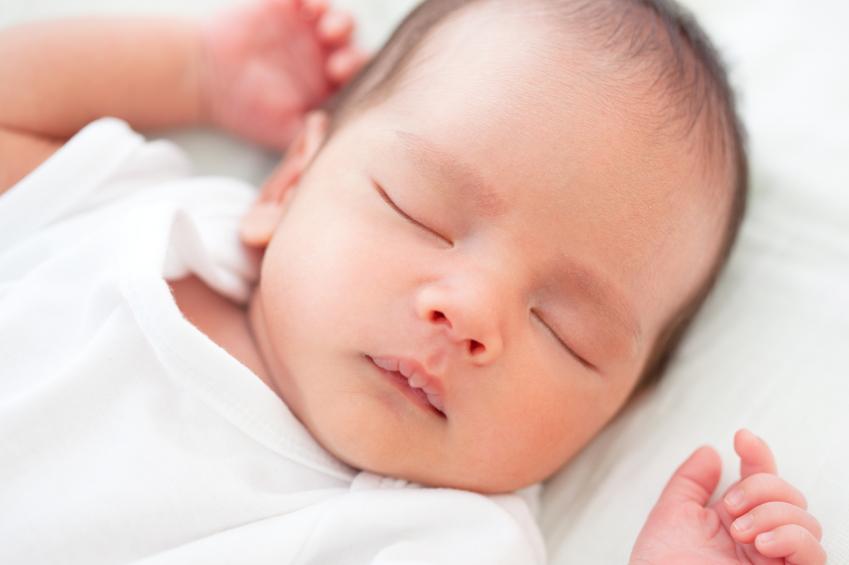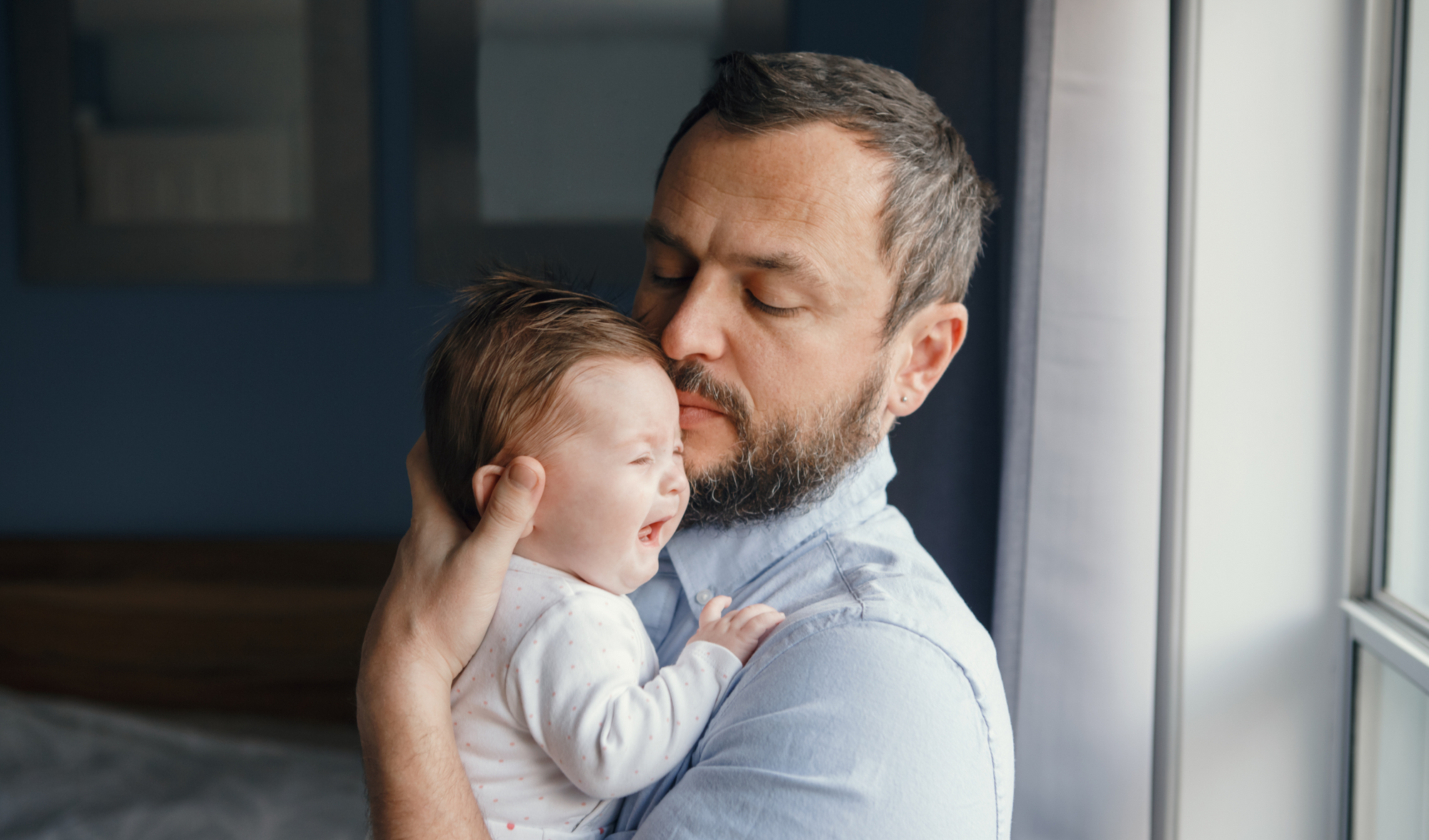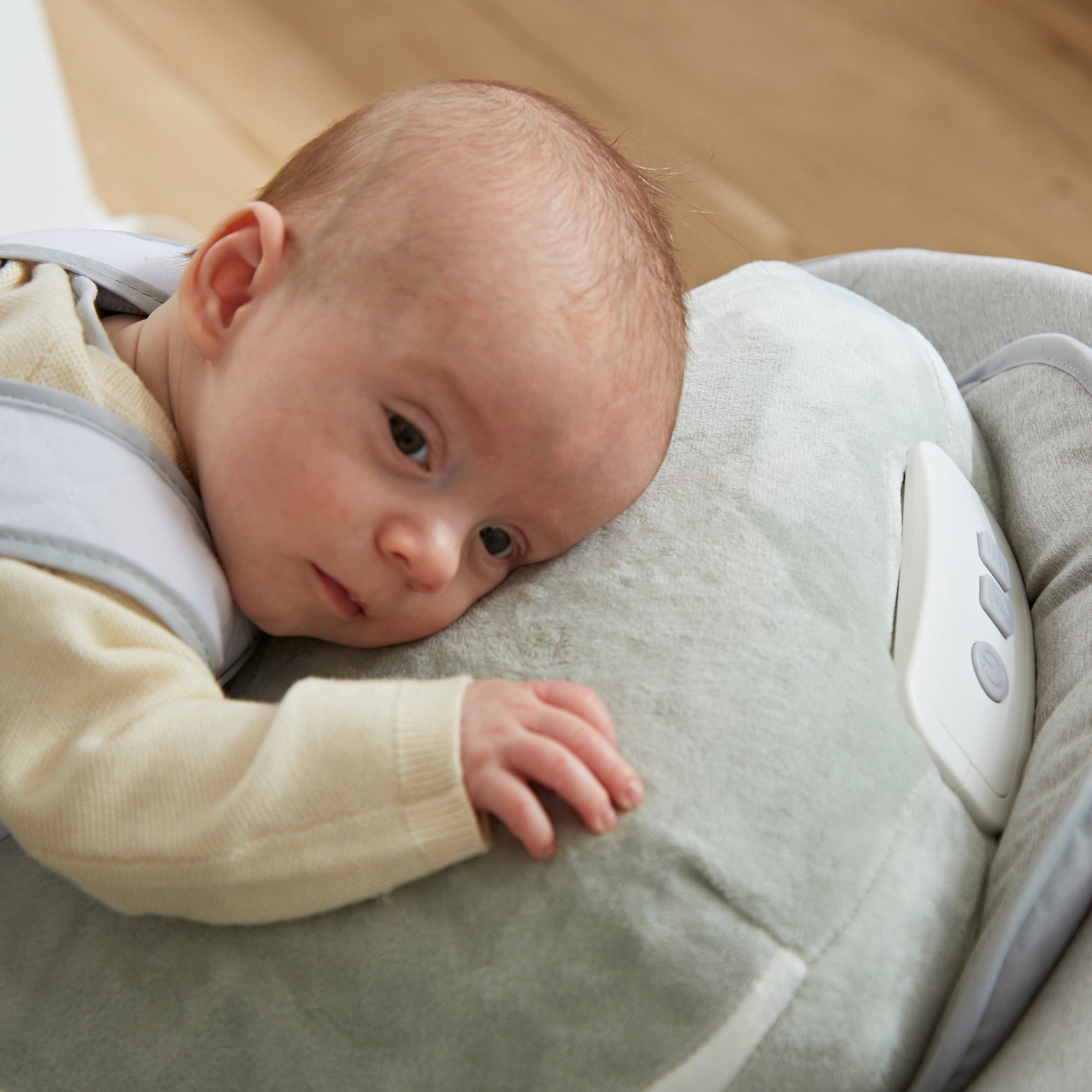Babies need a lot of sleep in their first few months, although sadly, their sleeping schedule doesn’t always match your own. For this reason, you can find that they sleep in the most unusual places, like in the car seat, or in a rocker or just in your arms. These are not the safest places for your baby to sleep, and although it can feel like such a relief when they do eventually nod off, safe sleeping spaces for your baby trumps convenience every time. Because of the devastating consequences of SIDS (Sudden Infant Death Syndrome), safe sleeping is of paramount importance to parents, so read on for more advice on safe sleeping for babies so you can be well prepared for what lies ahead.
Where should babies sleep?

It is recommended that you put babies down to sleep in their cot or Moses basket on their backs. This helps to prevent any breathing obstructions and keeps airways clear. Babies should also be placed with their feet at the bottom of the crib with their head uncovered and their blanket no higher than their tummy.
You should not let your baby sleep in their rocker, in a car seat, in your arms or on their Babocush comfort cushion. It can be dangerous for your baby to be slumped over in their car seat, and even more so if you are holding your baby when they nod off in case you do the same. The Babocush is designed to hold babies safely on their tummies to keep airways open, help relieve wind and gas and for them to relax and settle on – but it should never be used as an alternative to their proper crib, cot or Moses basket.
How long should babies sleep for?

Babies can sleep up to 15 hours a day for their first three months, in sleeping patterns that differ from individual to individual. Some babies will quickly develop a night time routine and sleep for 8 hours straight, and others will take frequent naps for a few hours at a time. Until you get your baby established into a routine, it will feel like sleep is pretty scattered, so you will need to work around your baby for the first few months to ensure they get all the rest they need.
How do you keep babies at a safe temperature when they sleep?
Many parents are worried about keeping their baby a comfortable temperature when they sleep – after all, if you get too warm or cold during the night you can throw off covers or add more layers as appropriate, but your baby cannot. The risk of SIDS is also higher for babies who get too hot when they sleep.
For the first 6 months, your baby will probably sleep in your room with you, but when they move into their own room, there are a few things to be aware of. First, check the temperature of the bedroom – many baby monitors now come with a built-in thermometer which can alert you when the room gets too hot. Never use a duvet, quilt or pillow for a baby under one year old to reduce the risk of suffocation.
When it comes to clothing for your baby to sleep in, fitted is best, so that nothing can ride up around your baby’s nose or mouth while they sleep, and cotton fabrics are ideal because they are breathable and will help your baby maintain their temperature while they sleep.
Creating a Sleep Routine:
Establishing a consistent sleep routine for your baby is crucial for promoting healthy sleep patterns and ensuring a restful night's sleep. A calming bedtime ritual can signal to your baby that it's time to wind down and prepare for sleep. Consider incorporating activities such as a warm bath, gentle massage, or quiet storytelling to create a soothing pre-sleep ritual. Maintaining a regular sleep schedule is equally important, as it helps regulate your baby's internal body clock and promotes a sense of predictability and security.
Additionally, creating a soothing sleep environment can significantly contribute to your baby's comfort and relaxation. Dimming the lights, playing soft, soothing music, and ensuring a comfortable room temperature can all help create an optimal sleep atmosphere conducive to a peaceful night's rest. By prioritizing the establishment of a consistent sleep routine, you can foster healthy sleep habits and contribute to your baby's overall well-being and development.
Staying Updated on Safe Sleep Guidelines

It is important for parents to stay informed about the latest safe sleep guidelines from reputable organizations such as the American Academy of Pediatrics (AAP) or the National Institute of Child Health and Human Development (NICHD). These guidelines are based on the latest research and can help parents reduce the risk of sudden infant death syndrome (SIDS) and other sleep-related deaths.
There are a few places where parents can find safe sleep guidelines. The AAP website has a comprehensive guide to safe sleep, and the NICHD website also has a number of resources for parents. Additionally, many local health departments and hospitals offer safe sleep education classes.
Here are a few tips for incorporating safe sleep guidelines into your daily routine:
- Place your baby on their back to sleep. This is the safest position for babies to sleep in.
- Use a firm, flat mattress. Avoid using soft bedding, such as pillows, blankets, and stuffed animals, in your baby's sleep space.
- Keep your baby's sleep space clear of clutter. This includes things like toys, bumpers, and blankets.
- Room share with your baby for the first 6 months. This means keeping your baby's crib or bassinet in your bedroom, close to your bed.
If you have any questions about safe sleep, talk to your paediatrician. They can help you create a safe sleep plan for your baby.
Ensuring a safe and comfortable sleep environment is paramount for the well-being of your baby. By adhering to the recommended safe sleeping practices, such as placing your baby on their back, maintaining a suitable room temperature, and eliminating potential hazards from the sleep area, you can significantly reduce the risk of Sudden Infant Death Syndrome (SIDS) and promote better sleep quality for your little one. Creating a consistent sleep routine and staying informed about the latest safe sleep guidelines further contribute to fostering a secure and nurturing sleep environment for your baby. By implementing these essential practices, you can rest assured that your baby is sleeping soundly in a safe and conducive space, allowing them to grow and thrive in a secure and nurturing environment.


